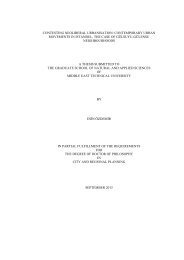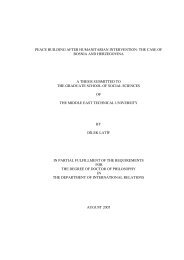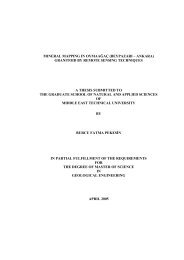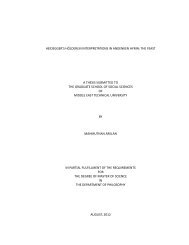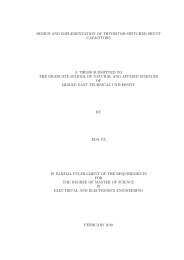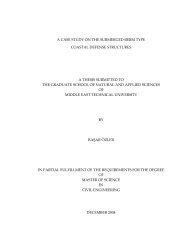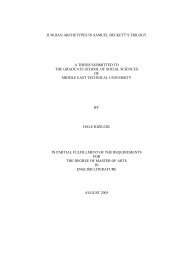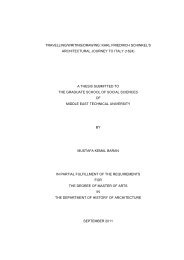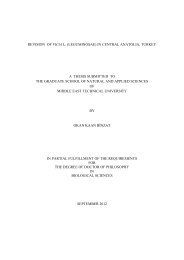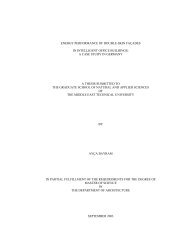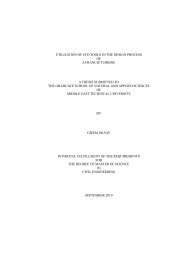View Original - Middle East Technical University
View Original - Middle East Technical University
View Original - Middle East Technical University
You also want an ePaper? Increase the reach of your titles
YUMPU automatically turns print PDFs into web optimized ePapers that Google loves.
variations’, Keynesians’ were a redundant foray. Lucas ‘demonstrated that limited<br />
information problems that did not imply price stickiness were nevertheless sufficient<br />
to generate quantity variations even in the presence of complete price flexibility’.<br />
Rational expectations concept of new neoclassical theory would then merely argue<br />
that market equilibrium is substantially Walrasian in that entrepreneurs would be right<br />
on to the degree of default in some askew information sheet collectively(Laidler<br />
2006:34-6).<br />
For Boyer, Lucas’ efforts are paradigmatic of the ‘Panglossian optimism’ in<br />
mainstream economics. ‘Back in 1960s, the hope was to progressively generalize the<br />
highly idealized and unrealistic model and converge towards a new formulation which<br />
should be simultaneously grounded in clear axioms and representative of really<br />
existing economies’. Alas, twenty years later, equilibrium theorists ‘had to recognize<br />
that the removal of each seperate hypothesis opens a new economic world, highly<br />
specific, which finally cannot be any more compared to other paths followed by other<br />
scholars. Each realistic hypothesis opens a whole specturum of models, which are so<br />
complex and rich in terms of results, that they cannot be pooled into a renewed<br />
general equilibrium model’(Boyer 1996b:24). Thus, general equilibrium can only be<br />
real when economy is indeed a Walrasian economy; that is, when there is indeed a<br />
Walrasian auctioneer. In such a Walrasian economy, money is only an abstract unit of<br />
account and ‘all transactions are centralised, and prices set, by an auctioneer’,<br />
collective goods are redundant, contingent future markets are not a rarity etc.(Boyer<br />
2001:66). However, ‘this optimum will be challenged or the market may totally<br />
collapse under the weight of the following conditions: if the quality of goods is<br />
uncertain and information asymmetric; if the technology derives from a learning by<br />
doing and using process or from network externalities; if the auctioneer is replaced by<br />
a complete decentralization of transactions in a monetary economy; if only a few<br />
contingent markets or insurance mechanisms can be implemented; and when the<br />
commitment of workers is related to the fulfilment of fairness criteria, i.e. if the equity<br />
principle partially explains static and dynamic efficieny’(Boyer 1996a:103). But more<br />
substantially, ‘Panglossian optimism’ is in fact a Panglossian fiasco largely because<br />
63



